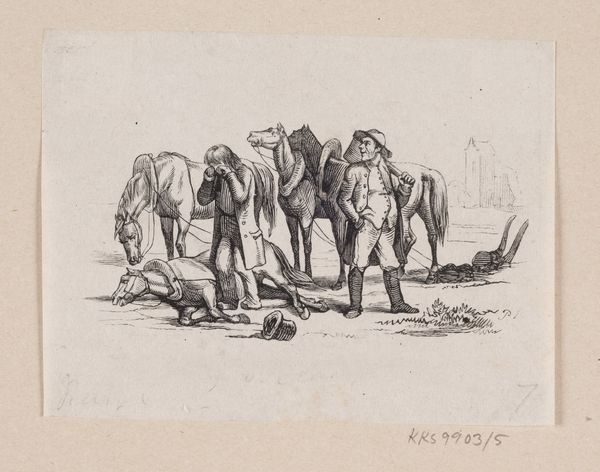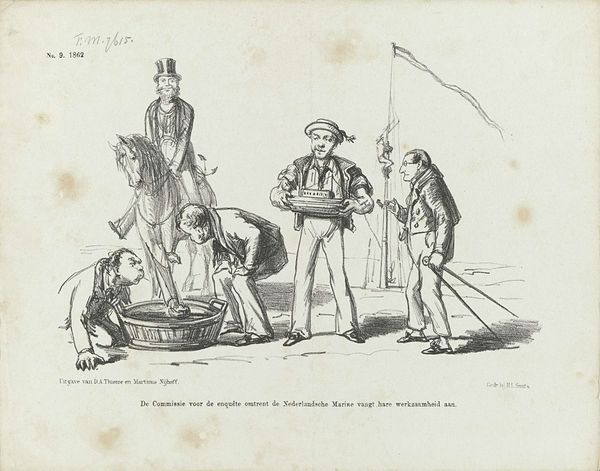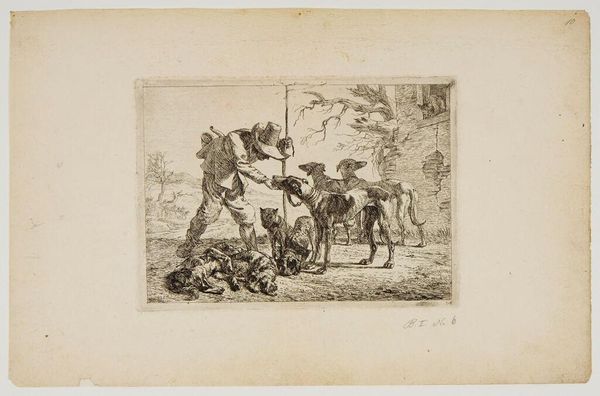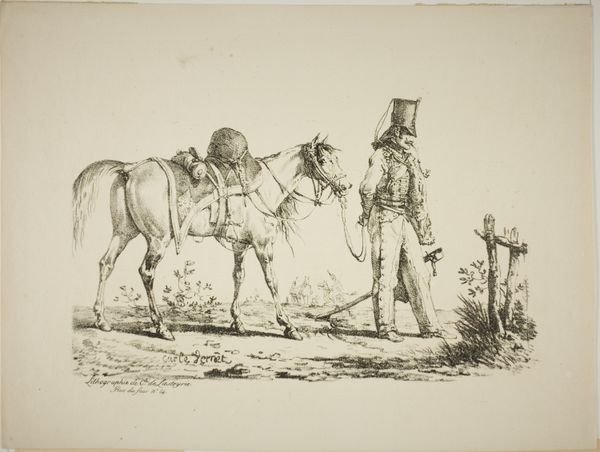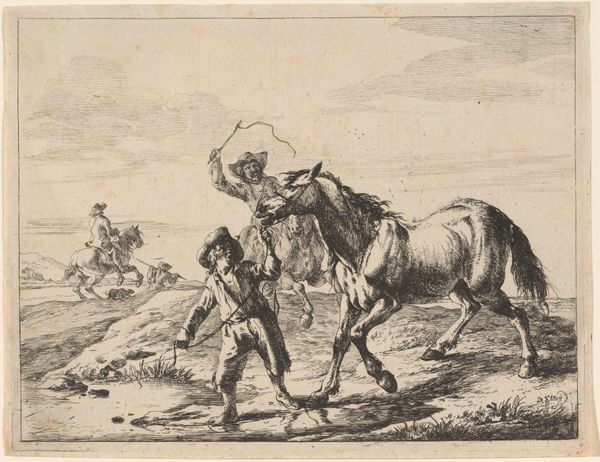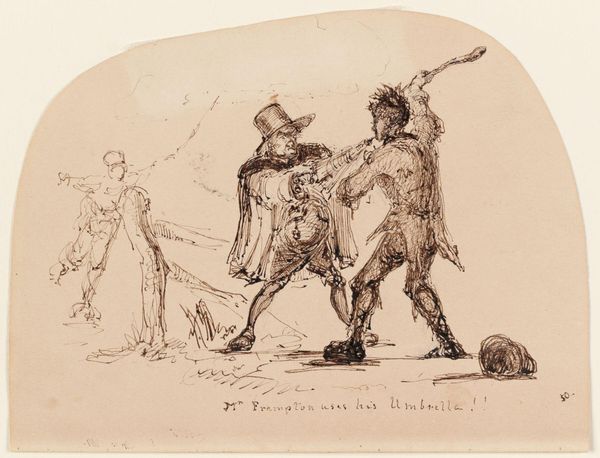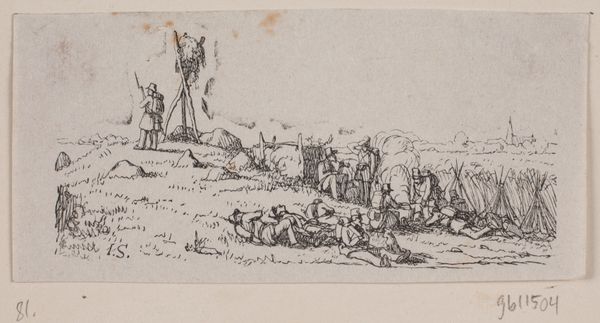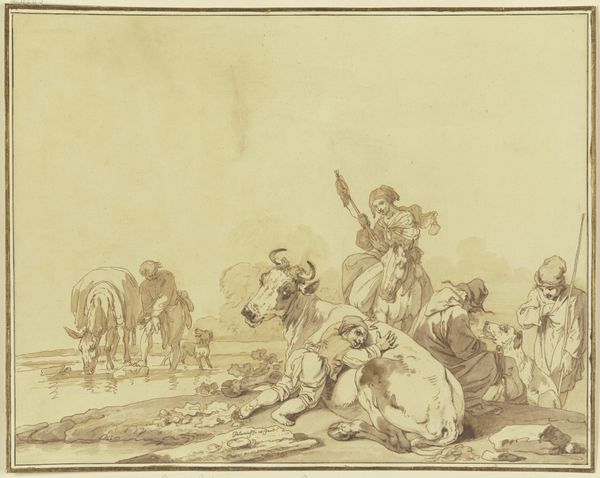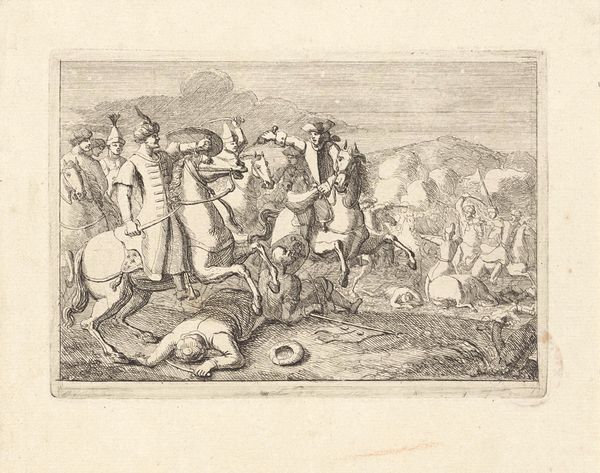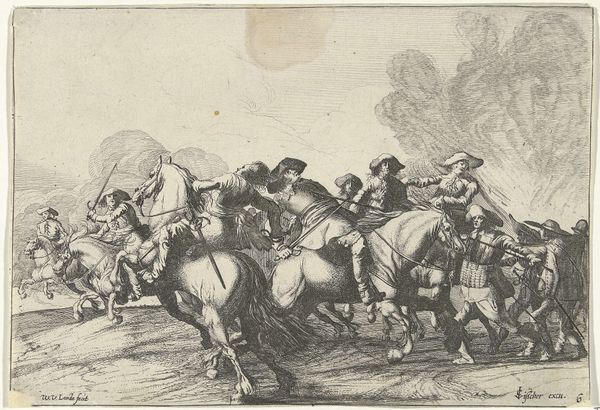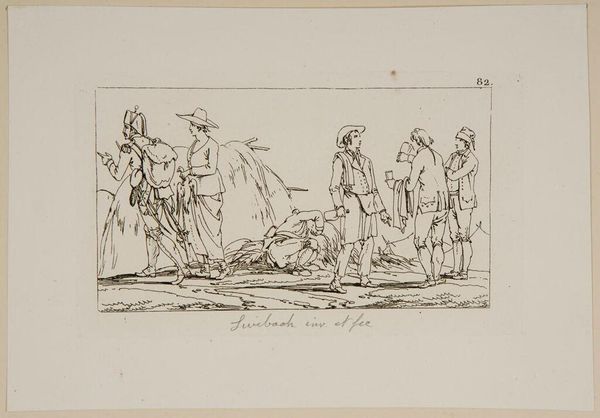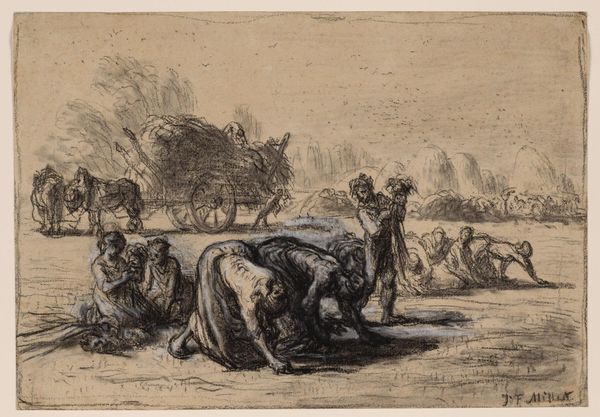
#
toned paper
#
quirky sketch
#
pen sketch
#
pencil sketch
#
personal sketchbook
#
sketchwork
#
ink drawing experimentation
#
pen-ink sketch
#
sketchbook drawing
#
sketchbook art
Dimensions: height 215 mm, width 297 mm
Copyright: Rijks Museum: Open Domain
Curator: Oh, this is heartbreaking. The stark scene in Pieter van Loon's "Koetsier treurend bij een gestorven paard" from 1862 really pulls at the heartstrings. Look at the coachman, the posture... utterly defeated. Editor: Yes, that's precisely the initial impact – a visceral feeling of loss and the hard realities of life, sketched with surprising speed and sensitivity using pen and ink on toned paper. The scale seems intimate, drawing us closer to this private moment of grief. Curator: Absolutely. It's not just the immediate emotion; think about the historical context. Horses were integral to labour, to life itself. Losing one would have been a devastating blow, especially to someone like this coachman, dependent on the animal's labor. There's a visible intimacy here; a man grieving, quite visibly, for the partner that facilitated his very livelihood. How does that play into notions of the working class and labour at the time? Editor: It highlights the socio-economic dimensions, indeed. Consider the role of animals in 19th-century Dutch society. They weren't just property; there was a utilitarian relationship and likely even some kind of empathetic connection. This image likely served as a mirror reflecting the hardships many faced, reliant as they were on animals and vulnerable to sudden misfortune. It humanizes these often-overlooked laborers. It really demonstrates the fragility and vulnerability inherent in depending on animal power. Curator: And notice the figure running away in the background. Who are they, and what might that mean for social considerations or divisions? I see the dead horse with his wagon to one side. It feels abandoned. What political undercurrents might resonate for viewers conditioned by this depiction of economic failure? How might we interpret the coachman's apparent sadness or shame? Is there perhaps commentary about industrial advancement to find? Editor: Interesting perspectives. The composition and that isolated figure, certainly introduce questions about societal structures, social mobility, and the changing landscape. While van Loon seems to focus on a private emotional moment, it exists within a particular economic and social backdrop, thus allowing different public, social and political lenses. Curator: This piece serves as a great reminder that even the simplest sketches can be dense with intersectional meaning. It’s not just art; it's a snapshot of lived reality, loss, and maybe the precarious nature of survival for some classes and species alike. Editor: I agree, and it demonstrates how artworks can function as primary sources, revealing valuable information about a particular period and its collective experiences, particularly for the working classes in that period. The image reveals not only about sorrow, but social infrastructure itself.
Comments
No comments
Be the first to comment and join the conversation on the ultimate creative platform.

